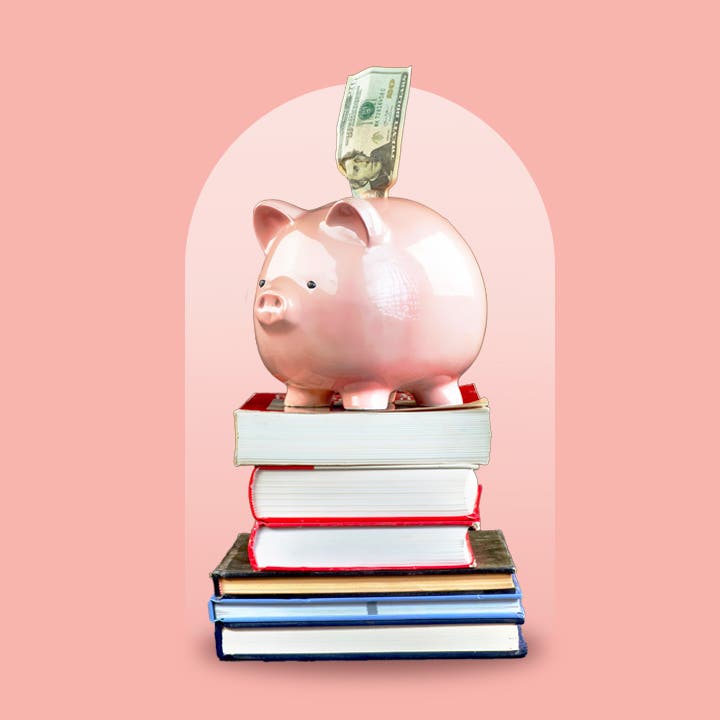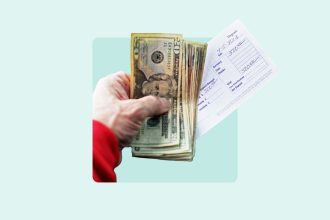Key takeaways
- Student loan experts are still fully assessing the One Big Beautiful Bill’s fallouts. One is clear: Not all borrowers who need private loans to fill the funding gap created by new federal borrowing limits will have good enough credit to qualify.
- Private lenders are exploring new products and underwriting criteria for subprime and deep-subprime borrowers, but this will likely mean higher interest rates — for everyone.
- Low-income borrowers still relying fully on federal loans may struggle with the new Repayment Assistance Plan’s minimum payment.
- The experts Bankrate interviewed agree that comparison-shopping your student loan options is more vital than ever.
Picture America’s outstanding student loan debt as a 10-slice pie. About nine slices are from federal loans, and only one (or about eight percent) is held by private lenders, according to Enterval Analytics. The One Big Beautiful Bill Act is sure to change those proportions, thanks to federal loans’ lower lifetime borrowing limits and the end of Grad PLUS loans.
We don’t know what [the size of] that impact is at this point, but it’s certainly reasonable to believe that you could see anywhere from 50% to 100% more in private student loan originations.
— Enterval CEO John Falb
But lending experts foresee other OBBB-driven impacts, too. For instance, not everyone who’s shut out of federal borrowing will qualify for private student loans. Will graduate and professional students who have traditionally relied on federal Grad PLUS Loans — repealed by the OBBB on July 4, 2025, effective July 1, 2026 — be able to access private funding?
“I think we can make predictions that for borrowers with a very good credit history or attending programs that tend to have a long track record of leading to very good labor market outcomes, likely the answer is yes,” says Lesley J. Turner, a professor of public policy at the University of Chicago. “But for borrowers with a spotty credit history or lower credit scores, programs that are not the very top in terms of labor market outcomes, I think we’re just going to have to wait and see what happens.”
To better understand the potential, looming lending gap and more, we interviewed Falb and Turner, plus two executives from private lenders — Ascent CEO Ken Ruggiero and MEFA executive director Tom Graf — as well as CampusDoor president Sara Parrish.
These interviews have been edited for length and clarity.
What’s an under-the-radar impact of the Big Beautiful Bill?
Much of the student loan-related provisions announced in May via the House bill preceding the OBBB remained when President Donald Trump signed it into law in July. Given that sneak peek, we already know many of the immediate effects it will have on Federal Student Aid, including:
The experts we spoke to more recently filled in a couple of lesser-known impacts:
Private student loan interest rates may rise
Ruggiero: If they do go up… it will be because lenders are getting more comfortable supporting the down-credit consumers or their cosigners, which really speaks to the PLUS Loan impact. When you look at the credit worthiness of the parent borrowers, a lot of them found their way into the PLUS Loan because they couldn’t get a [private] loan at all or at a rate they thought was reasonable relative to an alternative 9%-ish coupon, right? So, you could see the private markets opening up credit, but that comes at a cost because those loans tend not to get repaid at the same rates as [loans to borrowers with] higher credit. It’s just the way credit works.
Borrowers face higher monthly payments under new income-driven repayment plan
Turner: Previous income-driven repayment plans for borrowers with very low income, they weren’t required to make payments. They had a quote-unquote zero-dollar payment. And they could have a zero-dollar payment for the full length of time required and still receive forgiveness… Going forward, that will no longer be an option. The new income-driven repayment plan, RAP, the Repayment Assistance Plan, has a minimum payment of $10 a month, which doesn’t sound like a lot, but if your income is zero, $10 a month is going to be hard to come up with.”
I worry that the most vulnerable borrowers are going to be even more discouraged from taking up income-driven repayment and be more likely to end up in default.
— Public policy professor Lesley J. Turner, University of Chicago
Student loan delinquency is worst in states that voted for President Trump.
Will his administration help?
Read more
Will private lenders help borrowers who would have previously relied on federal loans?
This is perhaps the major impact of the OBBB that deserves even more discussion than it’s already gotten, including in The New York Times.
| Federal | Private | |
| Do you need good credit (or a creditworthy cosigner) to qualify? | No | Yes — however, some lenders have more flexibility underwriting (at the cost of higher interest rates) than others |
| Do interest rates rise when lower-credit borrowers are offered loans? | No | Yes |
| Can you borrow up to the cost of your attendance? | Not anymore | Yes — at most reputable lenders |
| Is innovation on the way? | No — besides what’s in the OBBB | Possibly — but will it be enough to serve borrowers now shut out from federal aid? |
At private lender Ascent, Ruggiero says he views the borrowing market in three segments, roughly of equal sizes:
- Prime borrowers who can get a loan from a bank
- Near-prime borrowers who are riskier, may not qualify with a bank, but can get funding from lenders with more flexible underwriting criteria
- Subprime or deep-subprime borrowers who have trouble qualifying
That third group is the one in question. If they max out their federal aid allotment and can’t qualify for private lending, perhaps because they don’t have a ready-made cosigner, what happens? Will the four-year college route become even less affordable than it’s proven to be in recent decades?
We’re all trying to open up credit so that we could efficiently price the interest rate and get the student that last piece of money they need.
— Ascent CEO Ken Ruggiero
As for the rest of our panel:
Graf: We in the state-based agencies like MEFA want to help as many people as possible. So, we are taking a look at that. [Subprime] are harder loans to finance, but that doesn’t mean we’re not going to walk down that path and see how we can do that. And there’s certainly a lot of discussion out there that the for-profits and the banks are looking at this hard… The amount of conversations I’ve had in the last month, since the bill was passed, with schools, with school associations, with bankers, is off the charts.
Parrish: It’s just a fact that not all of the students and parents that were served by the PLUS program will be able to seamlessly transition to standard private loan products. However — big however — we have brought two products to market just this summer that are specifically tailored toward widening the lending that can occur. So, I think that the industry sees a great opportunity there… I think we’re going to see more of these lenders coming to market.

Federal student loan changes making you eye private lenders?
Here are 7 with federal loan-like perks
Read more
Falb: I think a lot of the burden is going to fall on the families and the schools. Hopefully, we’ll see more schools be able to offer assistance to those borrowers. I know a lot of the top schools over the last several years have made commitments, such that there’ll be no loans required based on their expected family contributions [or Student Aid Index]. And [the new landscape] may make it a tougher decision for some of those families… so there might be a shift towards trade schools or other career paths.
What’s your up-to-date private student loan borrowing advice for Bankrate readers?
Turner: Until this law was passed, my advice was really is about the return on investment: If you are able to get a degree from a good school in a field of study that has a track record of putting students in a good position to have earnings and labor market opportunities, then if taking on a little bit more student loan debt or taking out a student loan to get into that school to be able to complete that degree, generally that’s a good investment. And there’s insurance against a very bad outcome due to a recession or changes in technology, like AI; there’s insurance against having to make unaffordable loan payments because of the availability of these income-driven repayment plans. So, that insurance has gone away now, and so the need to really shop around and make sure that the program you’re in has a good track record, that the school you’re going to has support available to help students complete their degree, that has become more important.”
Graf: “We’ve had a lot of people over the years say, ‘My kid was moving into school in a week. I needed to satisfy the bill. I didn’t really have time to [shop around], I went to that low teaser [APR] and I didn’t get it, but for expediency [chose that first lender].’”
So shopping around, it’s not just words, it’s really actions.
— MEFA executive director Tom Graf
Ruggiero: “If you have to live beyond your means, which means you have to borrow more, then find out if you have a cosigner before you start applying and getting all excited about the school that’s going to change your career trajectory or make your life better… And we see this a lot in undergrad with students that have multiple siblings and parents who saved to get them into freshman year and then they don’t have enough money or resources or credit score to get them into sophomore or junior year. So, I would say make sure you have a total cost of attendance, line of sight for that cash or financing, and then make sure you’re looking at the outcomes.”
Parrish: “Often, we see families start out with fully-deferred [loan] products… The benefit to flipping that on its head is that the student has repayment history right out of the gate. They’re building a credit score. They’re building a FICO, a credit file that has more on it than just loans in deferment. And it helps them get better interest rates in the subsequent years.”
If you or your family can afford an interest-only payment… I would seriously consider doing that.
— CampusDoor president Sara Parrish
Why we ask for feedback
Your feedback helps us improve our content and services. It takes less than a minute to
complete.
Your responses are anonymous and will only be used for improving our website.
Help us improve our content
Read the full article here














